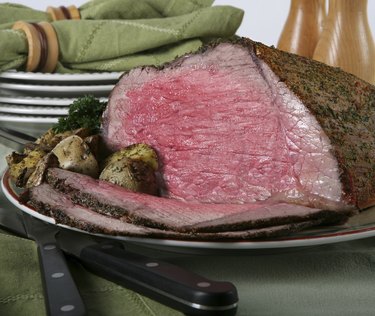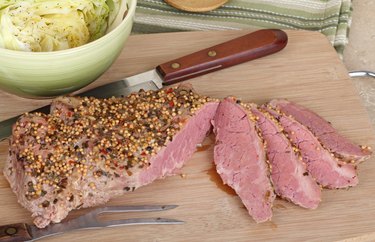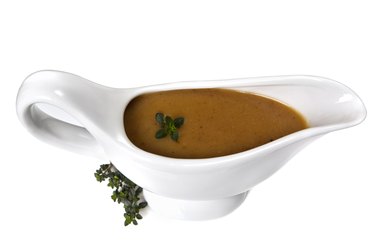
While silverside beef if tougher than many other cuts, it can still be cooked into a delicious roast. It must be cooked much more slowly than other meat to soften it. While your choice or marinade or seasoning will vary, knowing the proper cooking time for the roast helps in ensuring a moist roast with all of its juices locked in.
Description
Video of the Day

Silverside beef is a cut of beef from the hindquarter of a a cow. It generally is covered with tough skin that must be removed before being roasted or cooked. It is popular choice for corned beef in Australia and parts of Europe, and is known in parts of the U.S. as "bottom round" or "outside." Since it is very hard to use for stew or steaks, it is most popularly served as a roast.
Video of the Day
Cooking Times

Cooking times for silverside roast beef is similar to those for sirloin, fore rib and topside. At 180 degrees Celsius or 350 degrees Fahrenheit, cook 20 minutes per pound of meat plus an additional 20 minutes if you want to cook the meat rare. For a medium roast, cook 25 minutes per pound plus an additional 25 minutes. For a well-done roast, cook 30 minutes per pound but an additional 30 minutes. For a pot roast or slow roast, cook 30 to 40 minutes per pound plus an additional 30 to 40 minutes.
Crust

Many cooks recommend that you first blast the meat with a higher temperature at the beginning of cooking to create a tasty crust around the meat, helping lock juices in and preserve moistness. To do this, keep your oven at 475 degrees Fahrenheit for the first 20 minutes of cooking time. When you carve the meat, unless you are opting for a well-done roast, you will have a pleasant pinkish-brown color when you carve the roast.
Tips

As locking in the juices of the meat is very important, have the oven preheated before beginning. Rub the seasoning into the meat instead of just tossing it on top to let the spices to permeate better. Making a gravy and putting vegetables in the pan can both add flavor and cook your vegetables for you in a lovely marinade. Don't put in too much liquid, or else it will conflict with the natural juices of the meat.